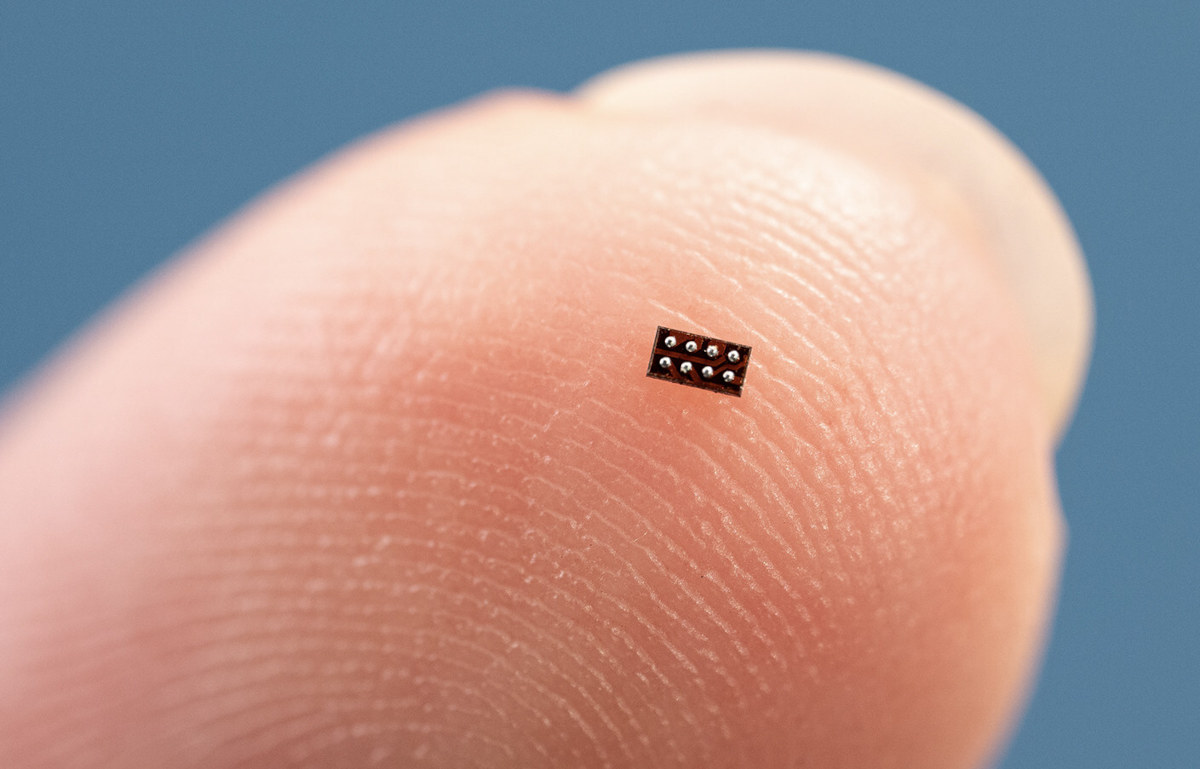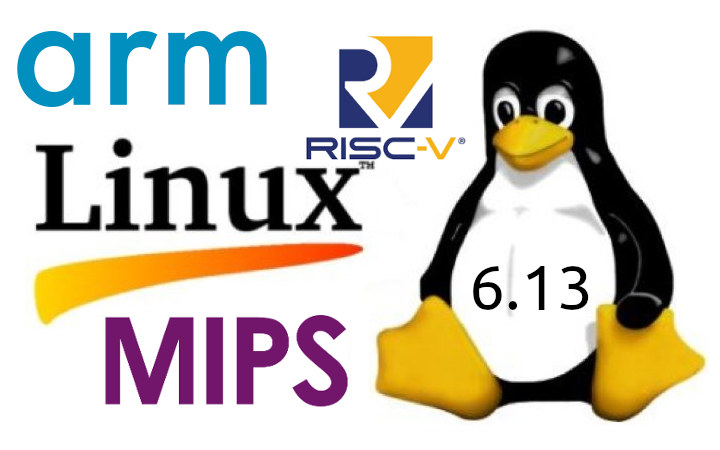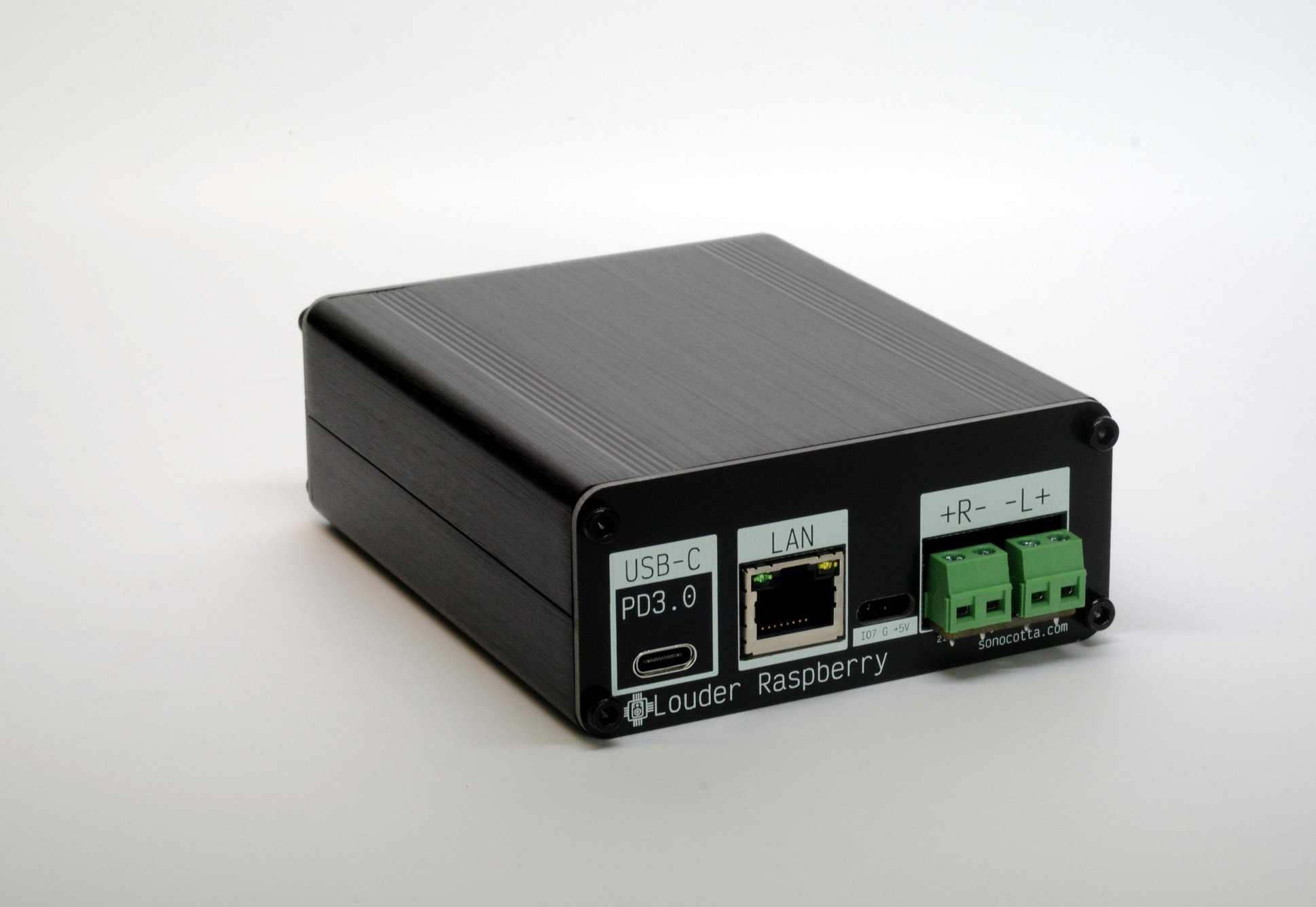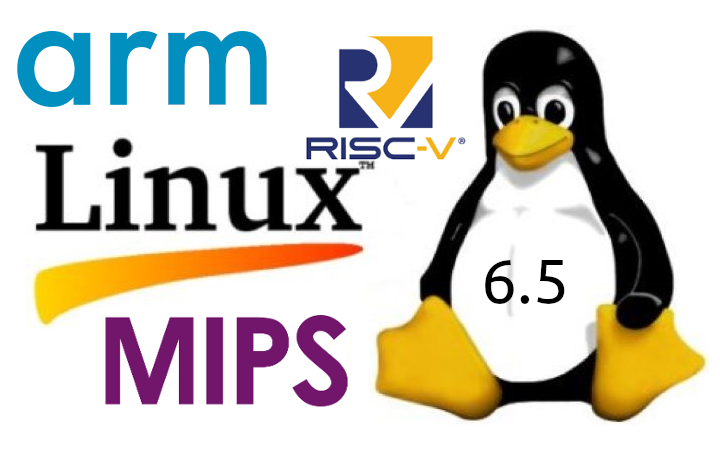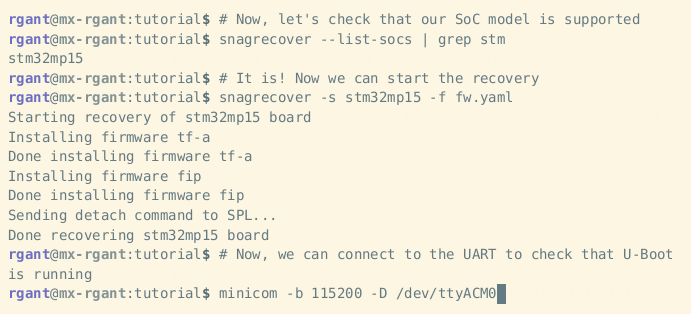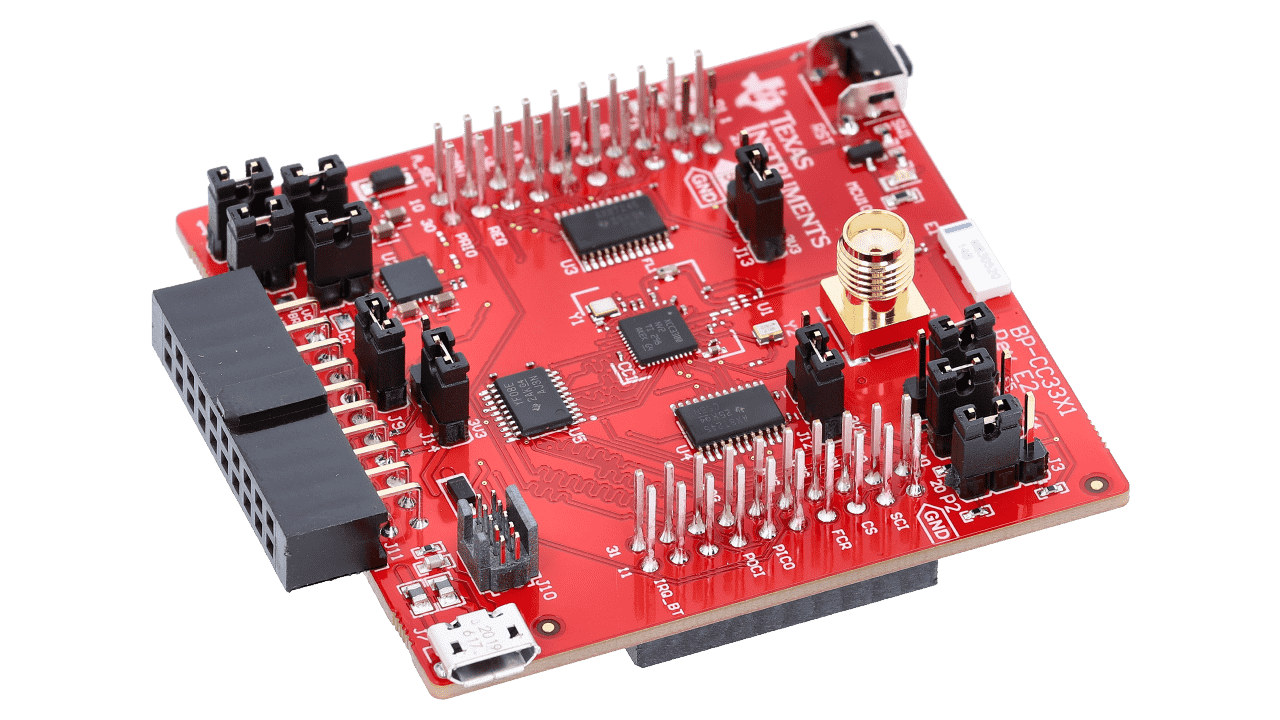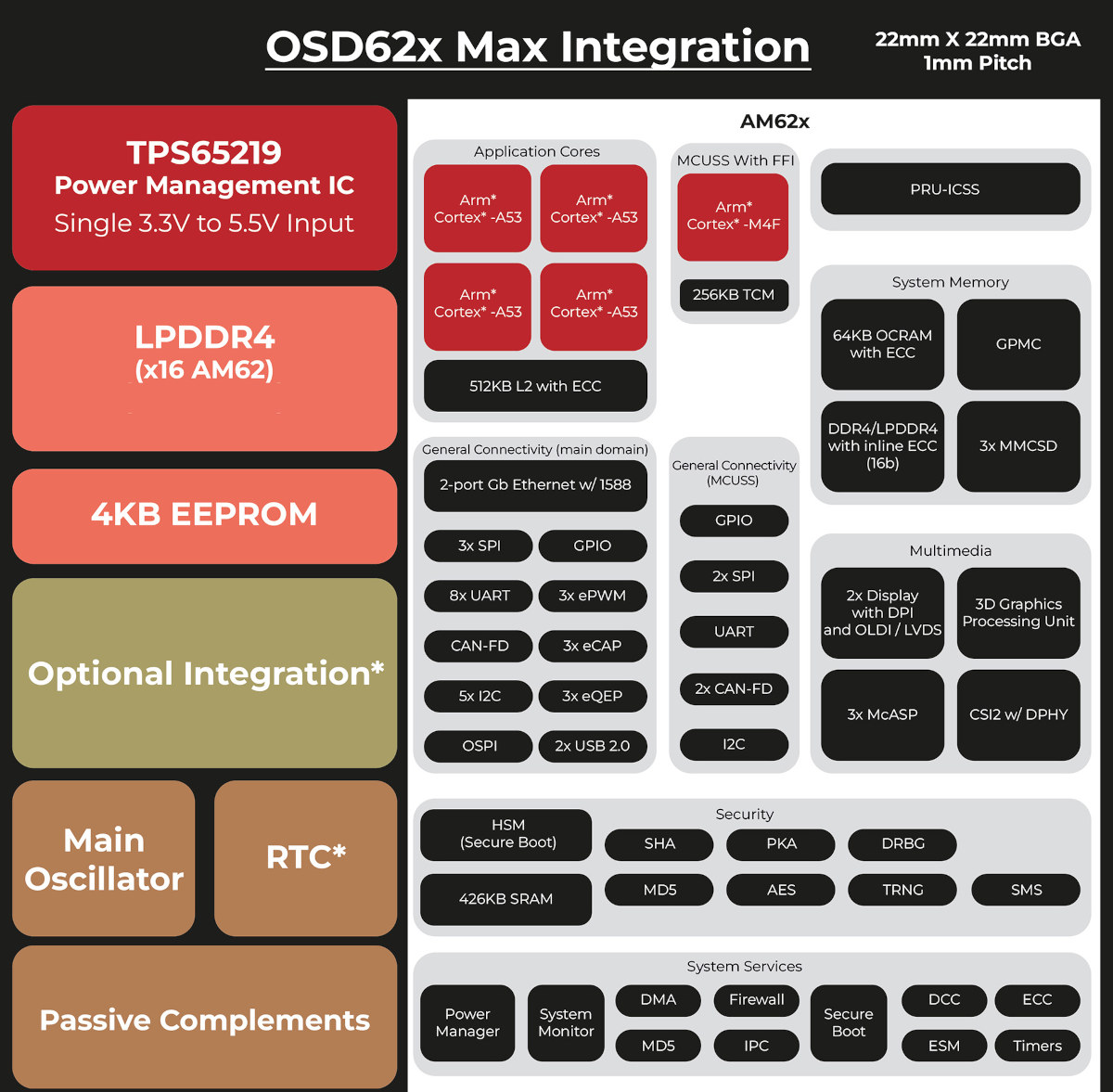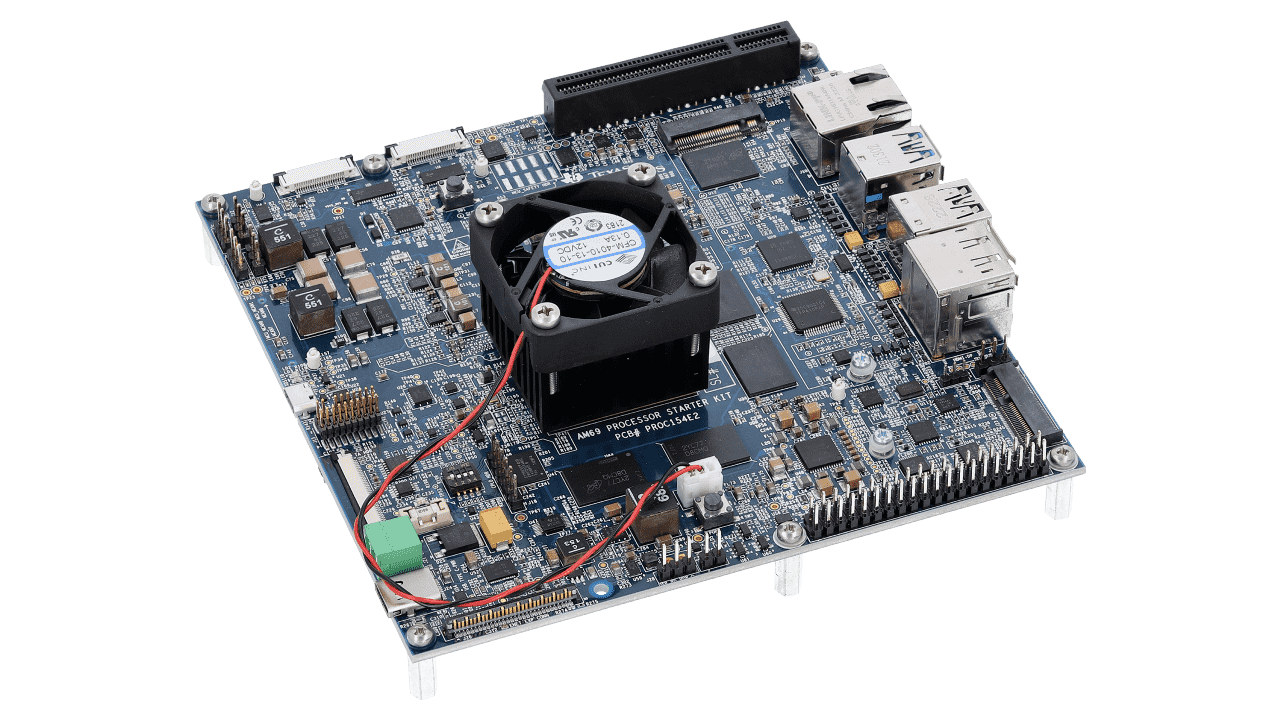Texas Instruments (TI) has expanded the MSPM0 Arm Cortex-M0+ MCU family with the MSPM0C1104 which is the world’s smallest microcontroller measuring just 1.38mm2 in its WCSP package, or about the size of a black pepper flake. Equipped with up to 16KB flash, 1KB SRAM, I/Os such as GPIO, I2C, UART, SPI, and a 12-bit analog-to-digital converter (ADC), the MSPM0C1104 is optimized for space-constrained applications such as medical wearables and personal electronics. TI MSPM0C1104 specifications: MCU Core – 32-bit Arm Cortex-M0+ CPU clocked at up to 24MHz Memory – 1KB of SRAM Storage – Up to 16KB of flash Peripherals Up to 18x GPIO (5V tolerant) 1x UART, 1 I2C, 1x SPI Analog 1x Analog-to-digital converter (ADC) with up to 10 total external channels, 1.7Msps at 10 bit or 1.5Msps at 12 bit with VDD as the voltage reference Configurable 1.4V or 2.5V internal ADC voltage reference (VREF) Integrated temperature sensor […]
Linux 6.13 Release – Main changes, Arm, RISC-V, and MIPS architectures
Linus Torvalds has just announced the release of Linux 6.13 on the Linux Kernel Mailing List: So nothing horrible or unexpected happened last week, so I’ve tagged and pushed out the final 6.13 release. It’s mostly some final driver fixes (gpu and networking dominating – normal), with some doc updates too. And various little stuff all over. The shortlog is appended for people who want to see the details (and, as always, it’s just the shortlog for the last week, the full 6.13 log is obviously much too big). With this, the merge window for 6.14 will obviously open tomorrow. I already have two dozen pull requests pending – thank you, you know who you are. Linus Release about two months ago, Linux 6.12 – the new LTS version – brought us real-time “PREEMPT_RT” support that had always required out-of-tree patchsets until now, the completion of the EEVDF (Earliest Eligible […]
Louder Raspberry Pi is an open-source home media center that is powered by Raspberry Pi Zero and a TI TAS5805M DAC
Louder Raspberry Pi is an open-source home media center based on a combination of the Raspberry Pi Zero W or Zero 2 W and the Texas Instruments TAS5805M DAC. It is an audio entertainment platform created by Andriy Malyshenko of Sonocotta, a Polish electronics hobbyist and maker. Louder Raspberry Pi incorporates the computing power of the Raspberry Pi Zero and the Hi-Fi audio processing capabilities of TI’s TAS5805M DAC in a compact, aluminum case. The device delivers up to 25W per channel stereo output and is powered via a 65W+ USB-C PD3.0 adapter. It is “aimed to be paired with medium-to-large speaker systems” and supports both Wi-Fi and Ethernet. The Raspberry Pi board was selected over other lightweight alternatives due to the ease of development it offers. The Raspberry Pi Zero board is small enough to make for an overall compact device and powerful enough to handle the demands of […]
Linux 6.5 release – Notable changes, Arm, RISC-V and MIPS architectures
Linus Torvalds has just announced the release of Linux 6.5 on the Linux Kernel Mailing List (LKML): So nothing particularly odd or scary happened this last week, so there is no excuse to delay the 6.5 release. I still have this nagging feeling that a lot of people are on vacation and that things have been quiet partly due to that. But this release has been going smoothly, so that’s probably just me being paranoid. The biggest patches this last week were literally just to our selftests. The shortlog below is obviously not the 6.5 release log, it’s purely just the last week since rc7. Anyway, this obviously means that the merge window for 6.6 starts tomorrow. I already have ~20 pull requests pending and ready to go, but before we start the next merge frenzy, please give this final release one last round of testing, ok? Linus The earlier […]
Snagboot is an open-source cross-vendor recovery tool for embedded targets
Bootlin has just released the Snagboot open-source recovery tool for embedded platforms designed to work with multiple vendors, and currently STMicro STM32MP1, Microchip SAMA5, NXP i.MX6/7/8, Texas Instruments AM335x and AM62x, and Allwinner “sunxi” processors are supported. Silicon vendors usually provide firmware flashing tools, some closed-source binaries, that only work with their hardware. So if you work on STM32MP1 you’d use STM32CubeProgrammer, while SAM-BA is the tool for Microchip processors, NXP i.MX SoC relies on UUU, and if you’ve ever worked on Allwinner processors you’re probably family with sunxi-fel. Bootlin aims to replace all those with the Snagboot recovery tool. The Python tool is comprised of two parts: snagrecover using vendor-specific ROM code mechanisms to initialize external RAM and run the bootloader (typically U-Boot) without modifying any non-volatile memories. snagflash communicates with the bootloader over USB to flash system images to non-volatile memories, using either DFU, USB Mass Storage, or […]
TI launches Simplelink CC3300/CC3301 WiFi 6, Bluetooth 5.3 LE companion IC for IoT applications
Texas Instruments has unveiled the SimpleLink CC33xx family of Wi-Fi 6 companion IC with optional Bluetooth 5.3 Low Energy designed to be connected to a microcontroller (MCU) or a microprocessor (MPU) for secure and power-efficient IoT devices, The SimpleLink CC3000 supports 2.4 GHz WiFi 6, and interfaces over SDIO, SPI, and/or UART to the host system, while the SimpleLink CC3301 also adds support for Bluetooth 5.3 LE. Both chips can operate in high-temperature environments up to 105ºC. Texas Instruments CC3300/CC3301 specifications: Wireless 2.4 GHz WiFi 6 (802.11ax) up to 50 Mbps; Support for TWT and OFDMA, multirole (Access Point and Station) CC3301 only – Bluetooth 5.3 Low Energy up to 2 Mbps WiFi and Bluetooth COEX Host interface – 4-bit SDIO or SPI, and UART to external MCU or MPU Security – FW authentication and anti-rollback protection, WPA2/WPA3, Secured host interface Pacakge – 40-pin QFN package (5×5 mm) Temperature range […]
OSD62x SiP combines TI AM62x processor with LPDDR4, EEPROM, PMIC, and passives into a single package
Octavo Systems OSD62x is a system-in-package (SiP) combining the Texas Instruments AM62x processor with LPDDR4 RAM, EEPROM, power management, oscillators, and passive components, plus optional features such as an RTC and an 8-channel ADC. At least that’s true for the OSD62x Max Integration SiP (22×22 mm BGA), but Octavo Systems also have a smaller 14x9mm package called the OSD62x Size Optimized with “just’ the AM62x processor, LPDDR4 memory, and passive components. OSD62x “Max Integration” specifications: SoC – Texas Instruments AM62x (AM623/AM625) CPU – Up to 4x Arm Cortex-A53 @ 1.4GHz MCU – Arm Cortex-M4F GPU – 3D graphics up to 2048×1080 @ 60 fps (AM625 only) Storage I/F – 1x eMMC, 2x SDIO, 1x GPMC Display I/F – 24-bit RGB MIPI DPI and OLDI/LVDS Camera I/F – 1x MIPI CSI-2 with DPHY 1.2 Networking – 2x 10/100/1000M Gigabit Ethernet with TSN support USB – 2x USB 2.0 interfaces PRU-ICSS Other […]
Texas Instruments unveils AM62A, AM68A and AM69A Arm Cortex Vision processors and devkits
Texas Instruments AM62A, AM8, and AM69A Arm Cortex-A53 or Cortex-A72 Vision processors come with 2 to 8 CPU cores and deep learning accelerators delivering from 1 TOPS to 32 TOPS for low-power vision and artificial intelligence (AI) processing in applications such as video doorbells, machine vision, and autonomous mobile robots. Three families and a total of 6 parts are available: AM62A3, AM62A3-Q1, AM62A7, and AM62A7-Q1 single to quad-core Cortex-A53 processors support one to two cameras at less than 2W in applications such as video doorbells and smart retail systems. Equipped with a 1TOPS vision processor, the AM62A3 is the cheapest model of the family going for US$12 in 1,000-unit quantities. AM68A dual-core Cortex-A72 processor can handle one to eight cameras in applications like machine vision, with up to 8 TOPS of AI processing for video analytics. AM69A octa-core Cortex-A72 SoC supports up to 12 cameras and achieves up to 32 […]


